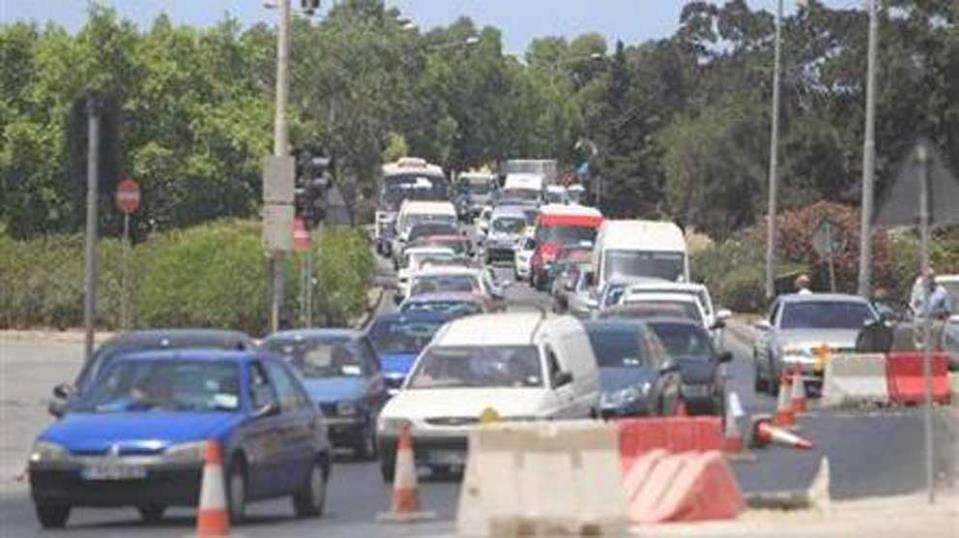Car usage in Malta is on the rise and traffic, especially during morning and evening rush hours, has become a daily occurrence irritating a large number of drivers.
Reports have read that an increase of 58,000 cars have been registered in Malta over the past ten years, 10,000 of which were registered between June 2013 and June 2014.
Professor Maria Attard, a lecturer at the University of Malta specialising in the application of geographic information systems and transport geography gave her views on the issue.
"The causes of car usage or as I call it, dependence, go beyond the public transport system. In just three decades Malta went from one of the forerunners leading the use of public transport, to one with the lowest public transport use and highest share of trips by car (over 70% of all trips done in Malta are done using cars)," she explained.
This shift from public transport to cars came about primarily due to increased economic development, increased household income and the rise in status of owning and driving a car (as opposed to riding the bus), she explained. "This trend is common throughout all western countries when GDP increases".
Increased car ownership was also supplemented by the provision of infrastructure, she explained. "Malta has a very extensive road network and for many years during the economic growth of the 80s and 90s the provision of infrastructure paralleled that of the growth in cars. This fuelled the use of the car".
"If this persists we will continue to negatively affect current and potential users, with a very strong possibility that the remaining 11% that travel by bus might shift to cars"
"Once the car became the principle mode of transport it was very difficult to compete with it. This increase led to congestion resulting in more traffic and bus delays. Most investment went towards catering for automobiles and very little went towards the public transport system. The bus system became inefficient and very little was done to tackle the problem, until the 2008 reforms".
"If this persists we will continue to negatively affect current and potential users, with a very strong possibility that the remaining 11% that travel by bus might shift to cars. This will add further congestion, which is already bad enough particularly during peak hours, will create more pollution which in turn will affect environmental and public health. Our quality of life is slowly deteriorating because we are spending more and more time stuck in traffic".

Link between public transport and cars
There is a very strong link between the public transport system and the use of private cars, Professor Attard believes. "One has a significant impact on the other. Sustainability principles would see us choose collective transport as the main priority to improve environmental and public health, however this has not been the case and very little (even physical restriction to the use of the car) was done for the successful operation of the bus system".
As an example, professor Attard mentioned that car use restrictions (CVA and pedestrianisation) were introduced in Valletta back in 2007. Between two National Household Travel Surveys (1998-2010) Valletta registered a 10% shift from car use to public transport use, she argued.
"More investment is needed regarding the mix of available public transport systems alongside car use restrictions".
Asked when the decline of public transport began, Professor Attard indicated that in 1995 a sharp decline in the use of the bus service could be seen. "Car ownership was on the rise and space for more roads was becoming scarce (because of our dense urban area) and very expensive".
"There were a number of problems that plagued the public transport system during the 90s and 2000s"
"There were a number of problems that plagued the public transport system during the 1990s and 2000s. The operational structure (the drivers, the monopoly and the overall service offer), the fleet, the infrastructure and subsequent governments that did not invest and prioritize collective transport over private transport to sustain economic growth.

Recommendations
Professor Attard doesn't have a magical solution to improve the public transport system which would lead to reduced traffic on the roads. She does, however, have a few recommendations. "A policy decision towards sustainable mobility is needed, whilst we need to appreciate our environmental capacity to absorb pollution, cars, land use density etc. in order to manage the demand for transport".
Soft measures that can be introduced include campaigns and initiatives, whilst hard measures would see the introduction of road charges (CVA), pedestrianisation of areas and parking management, she explained.
"We can start trying to giveour streets back to pedestrians (rather than to speeding or parked cars) so that walking and bus usage become more appealing".
"Malta has an extensive bus network with a very high density of bus stops however when it comes to quality of service (punctuality, drivers, buses, bus stops) then the system has failed".
"Over the past decade I have recorded people complainof poor adherence to schedule, poor levels of information (particularly the old service), driver behaviour (even though this improved tremendously under Arriva), bus stop infrastructure being inaccessible or not sheltered, and the fleet which improved considerably under Arriva with the new accessible EURO 5 buses which now seems to have changed with the introduction of all sorts of vehicles offering scheduled public transport services. I would not say it is a complete failure but it is certainly one that is not delivering on key aspects of public transport operations".